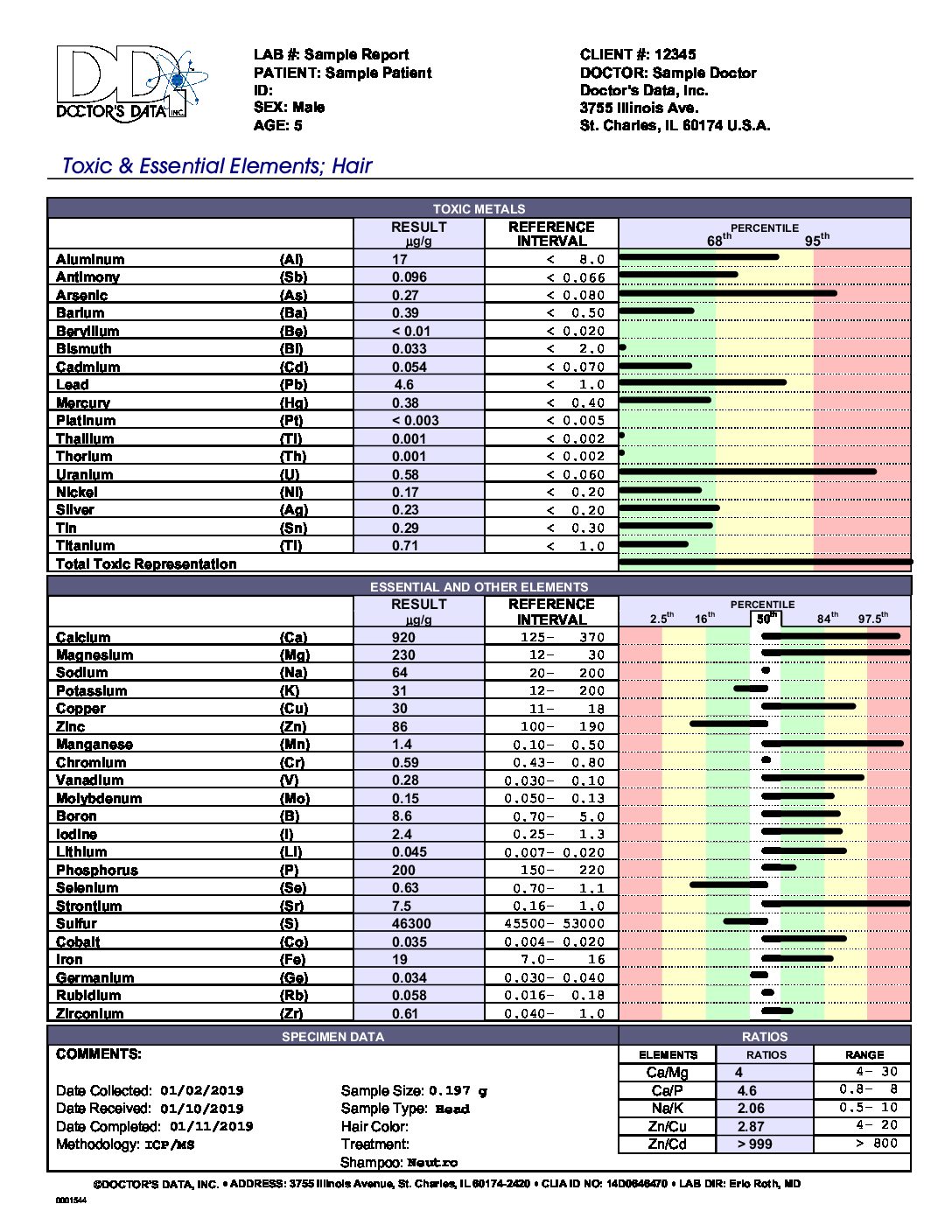Description
Test Sample: Hair
Hair Elements analysis provides information regarding recent and ongoing exposure to potentially toxic metals, especially methylmercury and arsenic, and time-averaged status of specific nutrient elements. This noninvasive screening test requires only .25 grams of hair.
Elements Tested:
Aluminum
Antimony
Arsenic
Beryllium
Bismuth
Cadmium
Lead
Mercury
Platinum
Thallium
Uranium
Nickel
Silver Tin
Titanium
Calcium
Magnesium
Sodium
Potassium
Copper
Zinc
Manganese
Chromium
Vanadium
Molybdenum
Boron
Iodine
Lithium
Phosphorus
Selenium
Strontium
Sulfur
Barium
Cobalt
Iron
Germanium
Rubidium
Zirconium
This test is useful for:
Toxic Element Exposure
Excessive Fish Consumption
Alopecia
Depression
Fatigue
Malabsorption
Hypertension
Impaired Glucose Tolerance
Kidney Function
Parkinson’s-like Symptoms
Sexual Impotence or Decreased Testosterone Production
Vision Problems
Detailed Information
With respect to its contained elements, hair is essentially an excretory tissue rather than a functional tissue. Hair element analysis provides important information which, in conjunction with symptoms and other laboratory values, can assist the physician with an early diagnosis of physiological disorders associated with aberrations in essential and toxic element metabolism.
As protein is synthesized in the hair follicle, elements are incorporated permanently into the hair with no further exchange or equilibration with other tissues. Scalp hair is easy to sample, and because it grows an average of one to two cm per month, it contains a “temporal record” of element metabolism and exposure to toxic elements.
Nutrient elements including magnesium, chromium, zinc, copper and selenium are obligatory co-factors for hundreds of important enzymes and also are essential for the normal functions of vitamins. The levels of these elements in hair are correlated with levels in organs and other tissues.
Toxic elements may be 200 to 300 times more highly concentrated in hair than in blood or urine. Therefore, hair is the tissue of choice for detection of recent exposure to elements such as arsenic, aluminum, cadmium, lead, antimony and mercury. The CDC acknowledges the value of hair mercury levels as a maternal and infant marker for exposure to neurotoxic methylmercury from fish.
Hair, however, is vulnerable to external elemental contamination by means of certain shampoos, bleaches, dyes, and curing or straightening treatments. Therefore, the first step in the interpretation of a hair element report is to rule out sources of external contamination.
Hair element analysis is a valuable and inexpensive screen for physiological excess, deficiency or maldistribution of elements. It should not be considered a stand-alone diagnostic test for essential element function, and should be used in conjunction with patient symptoms and other laboratory tests.



